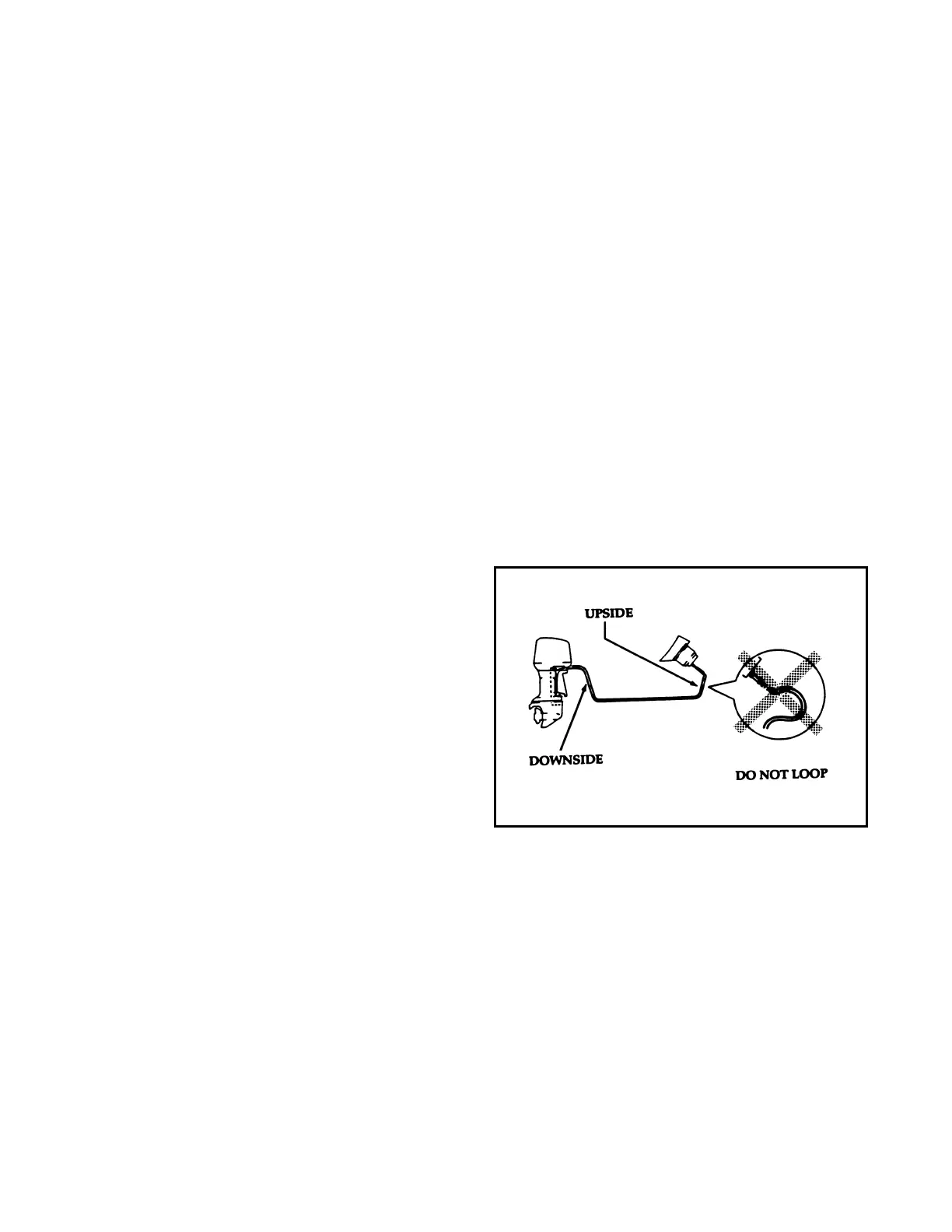5-12
Outboard Rigging Guide - 2001 Speedometer
Additional Information About
Marine Speedometer Operation
The typical marine speedometer, including all
Yamaha marine speedometers, use the pressure of
water impacting a pitot tube to indicate the speed
at which the water or boat is traveling. This pres-
sure is directly related to the density of the water
and the square of the speed. Fortunately, the den-
sity of the water, even between salt water and
fresh water, does not vary enough to affect the
speedometer reading. Also, this applied pressure
does not vary with either the size or shape of the
pitot or the manufacturer of the speedometer.
Because the relationship between pressure and
speed is a factor of the square of the speed, very
low pressures are produced at low speed (1.4 psi
at 10mph), and moderately high pressures are pro-
duced at high speed (92 psi at 80 mph).
Many factors (such as the position of the pitot
tube, boat design, and engine mounting position)
can cause inaccurate or inconsistent readings of
the speedometer. This is because these factors can
affect the speed of the water at the location of the
pitot compared to the actual speed of the boat.
Also, if the sensing hose contains any trapped
water, the resulting weight of this trapped water
and height of the gauge in the dash can further
affect the speedometer accuracy. Because of all of
these possible variations, the only way to accu-
rately check and calibrate a boat speedometer is to
compare the reading with a radar gun.
NOTES:
1. It is very difficult for any speedometer to
accurately indicate speeds below 30 mph
because of the low pressures produced. Adig-
ital speedometer like the Yamaha
Multifunction Speedometer can more accu-
rately indicate these speeds.
2. The pressure required to indicate speeds of
less than 9 mph is less than 1 psi. For the
Yamaha Multifunction Speedometer to indi-
cate 5 mph, only 1/2 psi is required. This is
also the pressure produced by a tube filled
with water to a height of 12 inches! This can
cause the speedometer to register around
5mph, when the boat is stopped. If this
occurs, first clear the speedometer tube of
water. If the gauge still shows a reading high-
er than zero when at rest, clear the gauge by
turning the ignition off for 5 seconds and then
turning it on again. This will reset the gauge
to zero.
3. A speedometer sensing hose can easily have
sections of trapped water. If these sections are
located mostly on the down side of the hose
(as indicated below), the resulting pressure
will prevent the gauge from returning to zero.
(A hose that is twisted is more likely to con-
tain sections of water on the down side of the
hose.)
4. Any water on the up side of the hose will
lower the speed indication and counteract any
pressure from water trapped in the down side
of the hose.
5. A speed sensing hose containing only air will
be slower responding because the air must be
compressed. However, it will be more accu-
rate because there will be no trapped water.
Note that the specialized speedometers used
by professional water-skiers usually have a
large reservoir located in their speed sensing
line to separate the water from the air and
dampen the gauge action.
6. A speedometer hose filled completely with
water will react very rapidly, but weight of
the water in the tube will reduce the indicated
speed, especially at lower speeds.

